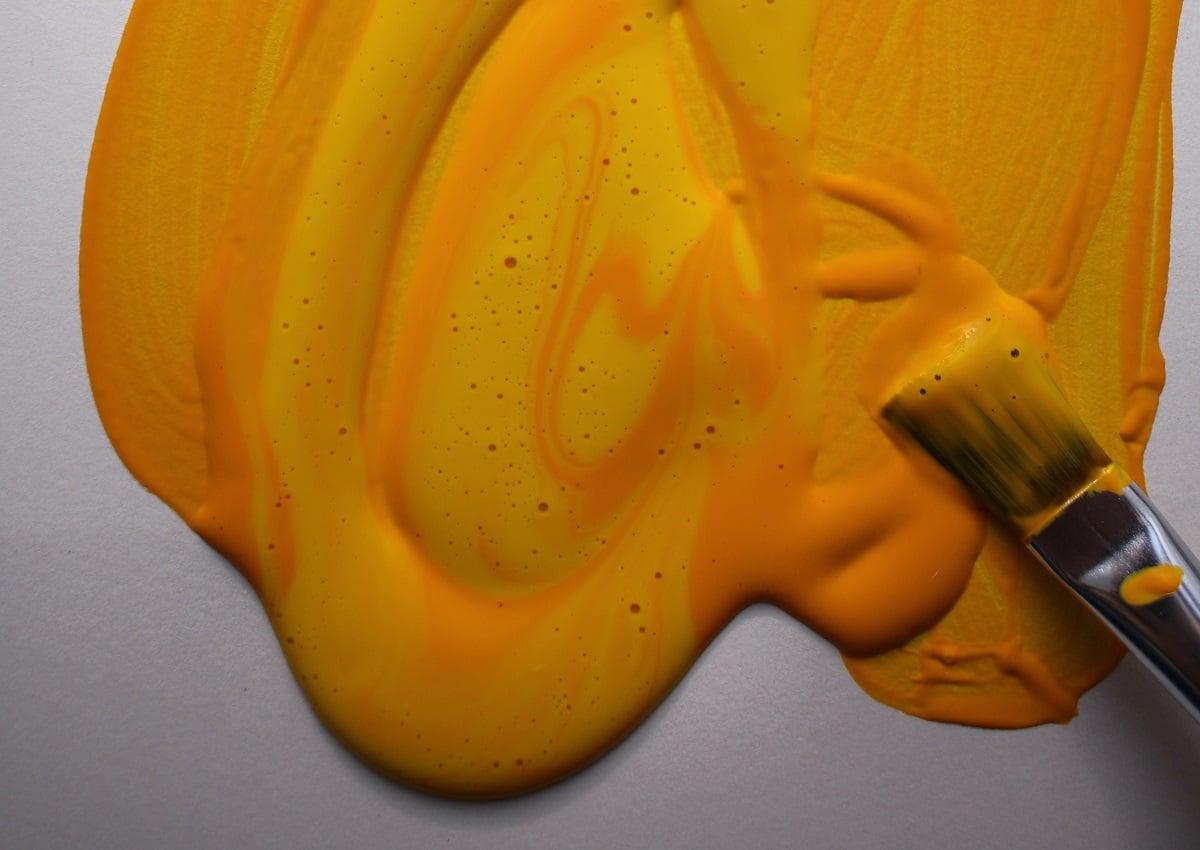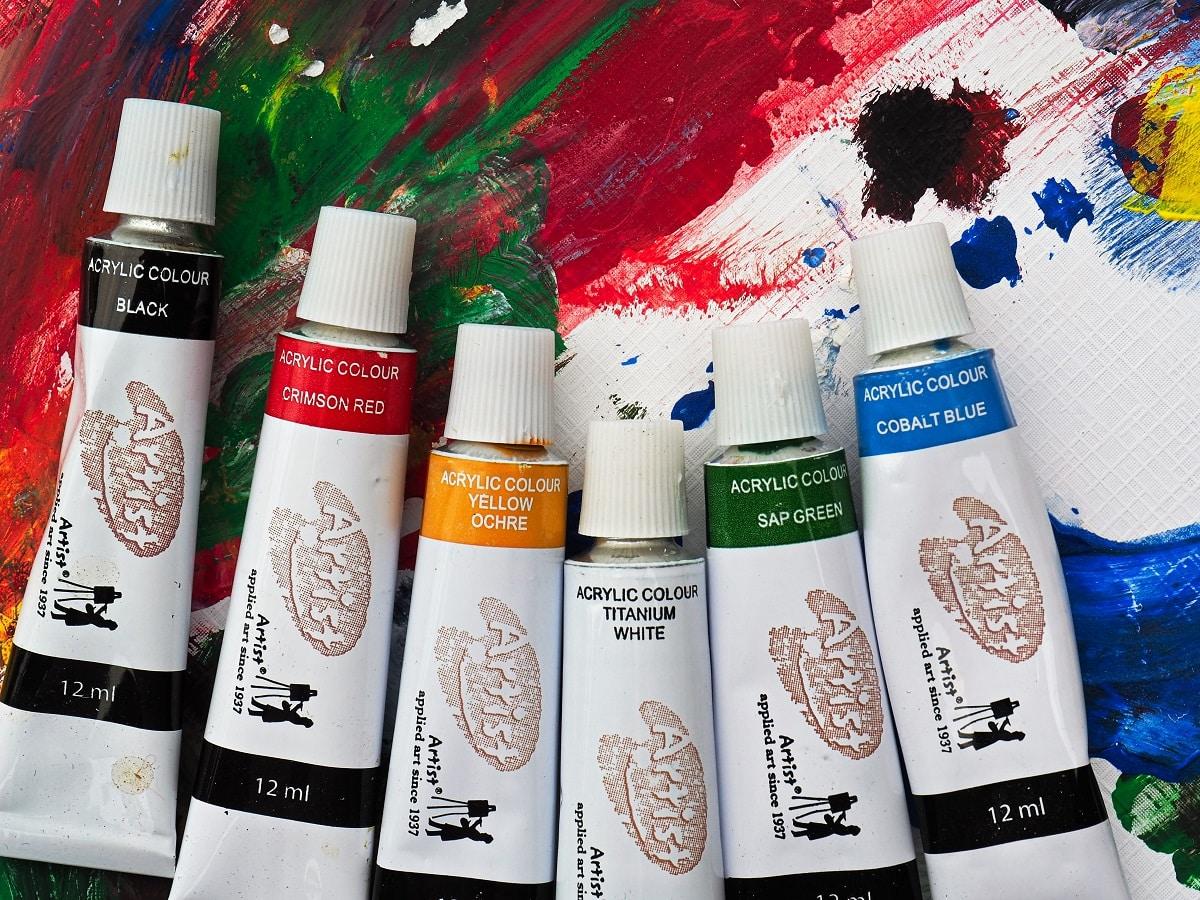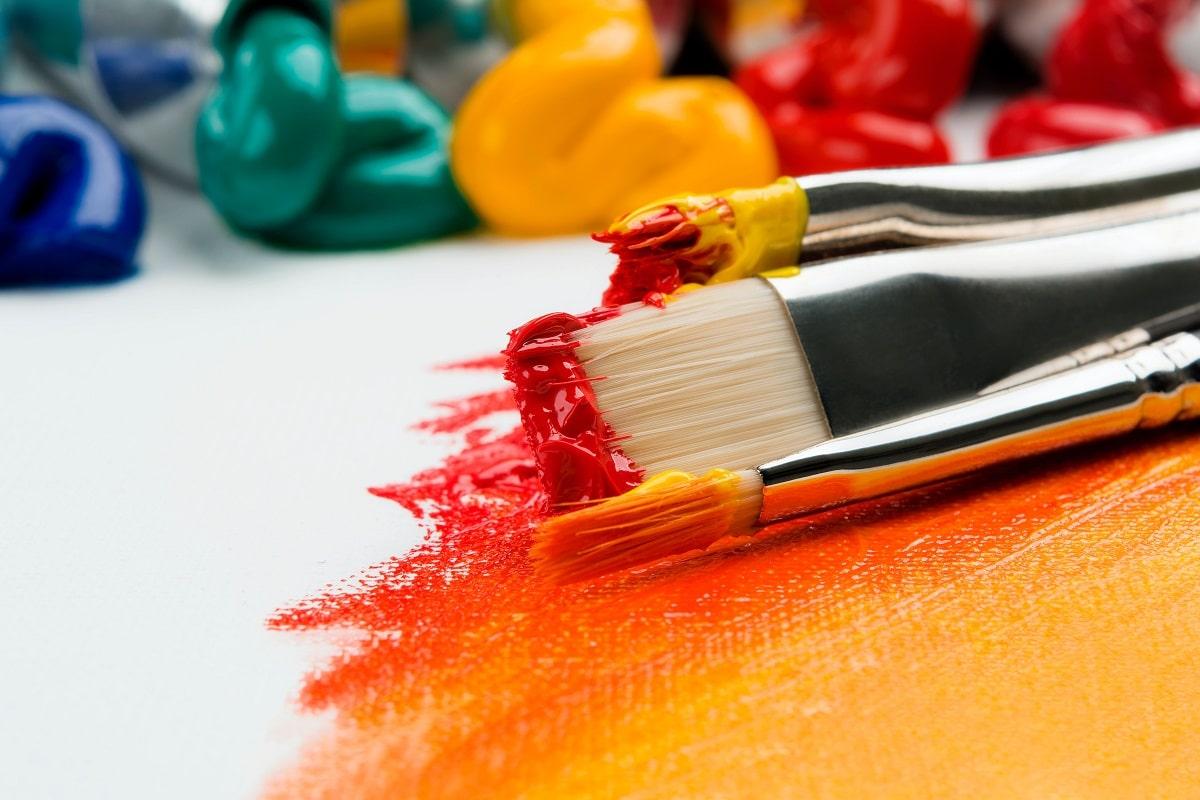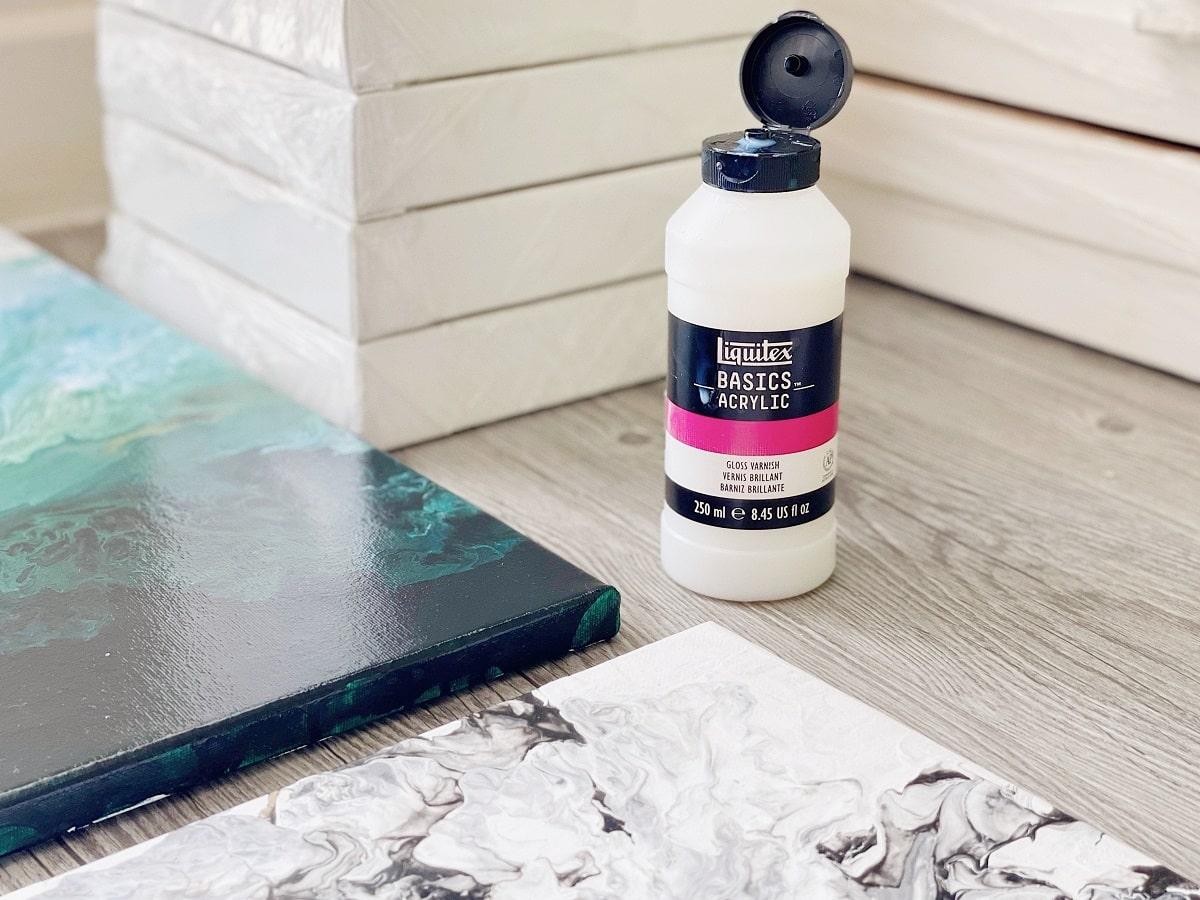Acrylic paints are known for their fast-drying properties. As such, even the best brushes for acrylic painting won’t give you the desired results if you aren’t familiar with the painting process. And drying the paint is an important part of it.
Generally, acrylic paint rarely takes more than 20 to 30 minutes to dry up completely. However, the actual drying time will depend on several factors. These include surface texture, room temperature, humidity, thickness, application, brand, and the type of acrylic paint being used.
Nevertheless, there are many ways to make acrylic paint dry quickly, and we have explored all the possible options in this guide. On the other hand, we have mentioned some external factors, such as how to marble acrylic paint and how to clean acrylic paint brushes, to improve your overall experience.
Keep scrolling if you want to learn more about acrylic paints.
Factors That Impact The Drying Process Of Acrylic Paints

The time taken for acrylic paints to dry up can differ from one instance to another. Certain situations can cause acrylic paint to dry faster, while others can slow down the drying process.
In addition, the drying process will get altered if you use different techniques and supplies for your acrylic painting. Nevertheless, here are a few factors that will impact the drying process of your acrylic paints:
1. Air Circulation
Acrylic paints can dry up faster if your room receives adequate air circulation. That’s why most artists prefer using a well-ventilated room for their acrylic paintings since they take less time to dry.
For instance, If you are using an air conditioner in the room, then your painting will dry up faster than expected due to increased air flow . Besides this, warm air conditioning vents can speed up the drying process since acrylic paints dry up faster in warm temperatures.
Therefore, beginners should protect their acrylic paintings with drafts as it helps to prevent the painting from drying too fast. Additionally, if you plan to paint outside, make sure it is not windy since it will dry your paint quickly. You can avoid this by setting the easel near a wind block to reduce air circulation near your painting. This will allow your painting to dry slower.
2. Temperature And Humidity
The humidity and temperature of the room will also affect the drying time of the acrylic painting, as they affect the water present within the acrylic. And depending on the conditions, the paint can dry too quickly or too slowly.
Rooms with heating systems will cut down the time required for the painting to dry. On the other hand, high humidity will prolong the drying process. Hence, you need to be careful about the temperature and humidity of your surroundings.
Likewise, painting outdoors can be tricky, especially during summers or hot days. Therefore, it is highly recommended to work indoors since you can control the required temperature of the room.
Apart from this, some rooms may have higher humidity than others. For instance, the basement will be more humid than your living room. So, if you plan to paint the basement, you will require a dehumidifier to reduce humidity, which will also prevent the paint from developing any mold over time.
3. Surface Absorption
Generally, acrylic paints are known for drying faster if the surface is porous and highly absorbent. Hence, if you prime your canvas with Gesso or any other primer, it will make the surface highly absorbent, and this will cause the paint to dry faster than usual.
Moreover, you need to pay attention while using acrylic paints on primed surfaces as you will have less time to blend the different colors of acrylic paint.
Paper can also absorb the moisture from acrylic paints, which causes the painting to dry up faster. This is why professional artists avoid unprimed paper as a primer can seal up the porous surface and prevent the acrylic from drying too fast.
4. Application
Another factor to consider while working with acrylic paints is the way you apply the paint to the texture. There are several ways to deliver the paint to the surface, with spray cans, brushes, and rollers being the most common ways of application.
In ideal conditions, it shouldn’t take more than 30 minutes for sprayed acrylic paint to dry since it will have an even and thinner consistency. On the other hand, brush and roller applications tend to leave thick layers on the surface, which take more time to dry completely before you can apply the next layer.
5. Type Of Paint
The drying time can also be affected by the paint type you use for the purpose. For instance, slow drying mediums such as Golden Open Acrylics will dry up slowly, which allow the painters plenty of time to blend the different colors. On the other hand, you should choose a fast-drying medium such as Golden Heavy Body if you don’t have much time on hand.
Besides this, the thickness of the paint will determine the time it takes for the painting to become dry to the touch.
How Long Does It Take For Acrylic Paint To Dry On Different Surfaces?
Depending on the type of surface and texture you decide to paint on, the drying time may vary drastically. In fact, some surfaces are known for being highly porous, while others show high resistance to acrylic paints. Therefore, it is important to understand the surface you are going to work on before doing any paint job.
1. Plastic
Acrylic paints usually take around 15 to 25 minutes to become dry to the touch on plastic. However, they have a tough time adhering to the surface since it is smooth and even. You can simply avoid the problem by applying varnish to the surface, as it will prevent the paint from peeling or flaking.
2. Metal
When it comes to metal surfaces, it usually takes 48 hours for the acrylic paint to dry. And most artists prefer to sand the surface since it helps to give the paint better adhesion.
Besides this, if you are planning on doing an outdoor project, then we highly suggest using a sealer or a primer on the metal surface before applying the paint. This gives the paint additional protection against water.
3. Cardboard
As far as cardboards are concerned, the paint can take around an average of 24 hours to dry. However, you will need to prime the surface since the moisture content in the paint can warp the material. Not only that, but priming also helps the paint to seal and cure properly on the surface without any unevenness.
4. Canvas
Fast-drying acrylic paints are known for taking an average of 20 minutes to become completely dried on a canvas surface. Nevertheless, there are several factors that might influence the overall drying time. For instance, acrylic paints usually take a long time to dry up on an unprimed canvas.
Additionally, slow-drying acrylics tend to stay wet for a few hours. Similarly, the weather condition and environment can greatly influence the overall drying process on a canvas.
5. Wood
Ideally, acrylic paints should take around 30 minutes to dry when applied to a wooden surface. However, it will require about 12 hours to cure properly.
Apart from this, the paint may take a longer time to dry if there is high humidity near the surface being painted. This will cause the wood to stay moist for a longer period, which will invariably prolong the drying process.
6. Glass
On average, acrylic paint takes around 24 to 72 hours to dry on glass surfaces; however, you will need to take a few precautions before applying the paint.
Firstly, using only acrylic paints formulated for glass can give you a much better result than regular paint. Plus, you will need to apply primer to the glass surface before applying thin layers of acrylic paint.
7. Fabric
Based on the type of acrylic formula and fabric you use, the paint can take around three to four days on average to dry. Moreover, you should make sure to dry the surface before applying any paint to the fabric. Also, you can heat set the paint since it gives the painting additional longevity.
What Is The Easiest Way To Make Acrylic Paint Dry Faster?

As we have mentioned earlier, acrylic paints are known for being one of the fast-drying mediums on the market, and they are very easy to use. Nevertheless, you can still enhance the drying process by following a few tricks and techniques. For example, you can always choose a warm and dry location for painting since it helps to speed up the drying process.
In addition, some professionals prefer to use mild, windy conditions as well as low humidity to influence the paint’s drying time. On the other hand, if you are doing indoor painting, you can turn on the ceiling fans to facilitate better air circulation. At the same time, open the windows as it helps to improve air circulation in the room.
Alternatively, some artists prefer to use heat guns, lamps, and hairdryers while working on paintings during the winter time. However, you should make sure to use the lowest setting while using these appliances since they can cause the paint to form bubbles or crack.
Moreover, the technique you use can increase the drying time of your acrylic paints. For instance, thicker layers of acrylic paints take a longer time to dry compared to thinner layers. Also, mixing slow-drying acrylics with regular acrylics can speed up the drying process.
Besides, the surface texture can determine the overall time taken for your painting to dry. Ideally, it is recommended to use porous surfaces if you are in a hurry to finish the painting in a short time.
What Is The Easiest Way To Slow Down The Acrylic Paint Drying Time?
When it comes to long-term projects, you can slow down the drying time, provided you follow a few tips.
First and foremost, you should always use a cold and damp room to help slow down the dry process. The high moisture levels in the room will keep the paint moist for a longer period, allowing the painters to blend different colors without any difficulty.
In addition, avoid using an air conditioner or ventilation system since it will cause the paint to dry up sooner than expected. You can use specially formulated acrylic paints that retain the water molecules on the surface for longer. This allows the painters to re-work the surface without any difficulty.
Wet palettes and air-tight containers are other ways to keep your painting moist for a long period. Usually, people prefer to use wet palettes whenever they need an extended break from the painting. On the other hand, airtight containers can be used to retain the moisture of the painting for a few days or weeks.
How Long Does Acrylic Paint Take To Dry Frequently Asked Questions ?
How To Clean Acrylic Paint Brushes?
Generally, most people prefer to use ‘everyday soap’ to clean their acrylic paint brushes since they get the job done easily. However, these are not formulated to remove acrylic paint entirely from the brushes; hence, some acrylic paint residue remains after the bristles dry up. Moreover, regular soaps are not ideal for cleaning natural hair brushes since it can completely dry them out.
That’s why professional acrylic painters prefer using art soap since it leaves the acrylic paint brushes in a clean and good condition.
How To Marble Acrylic Paints?
Marbling acrylic paints is an art technique that allows you to add depth to acrylic paints. For this, you need to mix equal parts of acrylic paint with water (which forms the liquid starch mixture) till it water downs the paint. As soon as you get a milky consistency, pour the paint into the liquid starch mixture you have prepared and stir it with a wooden skewer.
This will create a beautiful marbling acrylic paint effect on the starch mixture, which you can later use for various decorations.
What Are The Best Brushes For Acrylic Painting?
Normally, most people and first-timers use expensive brushes to get better-quality paints. But this might not be true for all cases. In fact, some of them are made from excellent quality synthetic hair, and they give amazing results if you know how to use them efficiently.
Therefore, instead of buying cheap brushes for your acrylic paints, you can select a few high-quality brushes, which should last a long time.
What Supplies Do You Usually Need While Using Acrylic Paints?
Apart from using an acrylic paint brush, most acrylic artists recommend using a stylus, a palette, and dry round brushes since most art techniques require these essential supplies.
On top of this, you can purchase other supplies, such as different-size brushes, art soap, and acrylic cleaners depending on the project. However, they are not necessary since most beginners can get their art projects done with simple supplies.
How Do You Mix Different Acrylic Paints?
Mixing acrylic paints is one of the easiest techniques as long as you understand how different color combinations work together. Simply pour the two different colors on a palette and blend them together with a palette knife.
Moreover, keep in mind that some color combinations can give you a darker contrast while others can give you a lighter contrast.

How Long Does Acrylic Paint Take To Dry Final Words
Before signing off, we would like to share a few important tips to improve your acrylic painting skills. Firstly, you should avoid applying a thick layer of acrylic paint on the surface since it doesn’t dry quickly. Thin layers take less time to dry, and you can easily make changes if necessary.
Secondly, you can add a retarder to the acrylic painting if you want to slow down the drying process. However, applying too much of it can leave your acrylic paint wet for a long time. Lastly, you should be observant of your environmental conditions since they can drastically affect the acrylic paint drying time.
That said, art is all about expressing yourself. Give your acrylic painting time to mature before adding any new dimensions or elements.
Have fun painting. See you next time!



